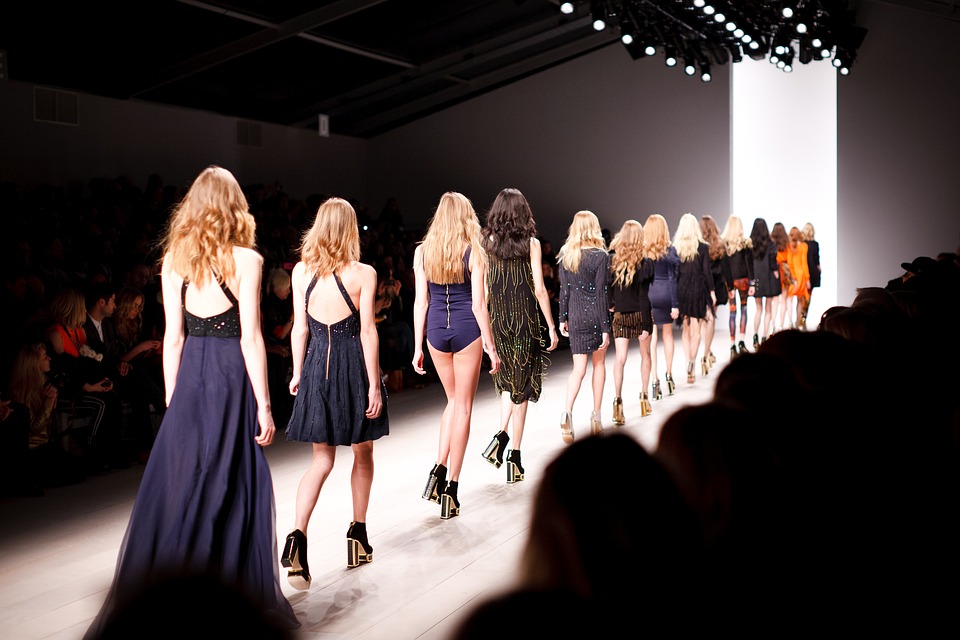Models could make a claim to own the rights to the recording of their sashays and struts they use on the catwalk – and should be able to make more money from their appearances during fashion shows, new legal analysis shows.
Intellectual property rights should apply to the work of models when they show off designer clothes, according to the research. The study calls for the fashion industry to make reforms to make it easier for models to get revenue from the publication of runway shows online or when they are involved in TV shows.
The analysis of European and international law, published as London Fashion Week gets underway, suggests models could take advance of intellectual property rights because their job can be seen as performing.
The study suggests there is enough flexibility within the UK intellectual property framework to recognize runway models as performers, meaning their work could be protected by law and they own the copyright to their performance.
Dr Mathilde Pavis, from the University of Exeter Law School, who carried out the research, said: “The vagueness with which performers’ rights are defined under national and international law could allow runway models’ to put forward a successful claim for protection under performers’ rights.
“Performers’ rights have never been claimed or used in this way before, but I believe there is nothing in the law that prevents them from doing so. This is because the nature of their work, or rather the nature of their performance, fits all the requirements for protection. They deserve the same rights as musicians or artists.”
Currently designers and producers of fashion shows own the copyright to the filming and pictures taken at the events, as they are not public. This does not apply to news photography. This new analysis means in future the designer and producer of the fashion shows would need to get the permission of the models to reproduce their appearance on the catwalk.
Dr Pavis’ analysis comes from interpretation of existing legislation and treaties such as the 1996 World Intellectual Property Organisation Performances and Phonograms Treaty (WPPT) and Rome Convention for the protection and performers, and the UK Copyright, Designs and Patents Act 1988. These all give performers copyright over their work.
The Rome Convention for the protection of performers says performers are “actors, singers, musicians, dancers, and other persons who act, sing, deliver, declaim, play in, or otherwise perform literary or artistic works’. The World Intellectual Property Organisation defines protected performers in a similar way. Dr Pavis believes catwalk modelling can be seen as a “dramatic performance” or “presentation” and the fact that this work may be judged as having less artistic value than other performances does not exclude models from having performers’ rights. This means that, like artists and dancers, models are entitled to receive payment if their work is recorded and then shown again, and have to give permission for the recording.
Dr Pavis said:
“Current laws and conventions are flexible enough that models can be seen as having the same legal protection as other artists. There is no need for any further judicial scrutiny. Of course supermodels will have the power to negotiate their own situation, but the fashion industry should take positive steps and improve contracts signed by other models so they recognise these rights.”
Collective licensing – as used in other group performances – could be used to avoid disputes between individual models taking part in the same fashion show. The fact catwalk shows are one-off events may limit models rights to benefit financially from any new rights. But they would still have the right to consent to how the show is recorded and pictures and video distributed.
Performers’ rights could be used to give models’ unions more leverage when negotiating trade agreements with agencies, publishers and designers.
Dr Pavis said:
“Thanks to performers’ rights, runway models could have access to a new stream of revenues from the publication of runway shows online or when they are involved in TV productions like Project Runway or other franchises. Runway models would also have a say in the way their appearance is modified and credited to them as performers’ rights include moral rights.”
Runway models, runway performers? Unravelling the Ashby jurisprudence under UK law is published in the Journal of Intellectual Property Law & Practice
Photo: Pexels

